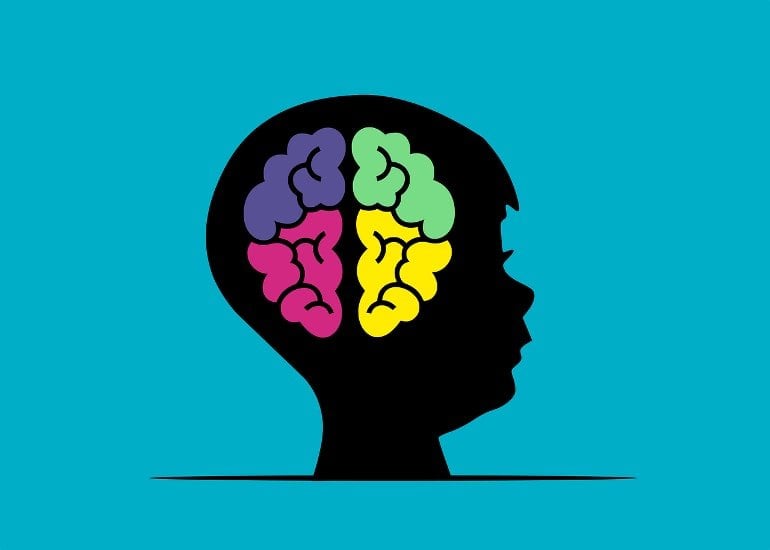Summary: A genetic subtype of ASD and schizophrenia have a duplicate gene that triggers overactivity in neural circuits, leading to social deficits and seizures. When researchers reduced the level of the PRRT2 gene in mouse models of 16p11.2 duplication syndrome, social behaviors were restored and seizure activity decreased.
Source: Northwestern University
Northwestern Medicine scientists have identified the cause of a genetic subtype of autism and schizophrenia that results in social deficits and seizures in mice and humans.
Scientists have discovered a key feature of this subtype is a duplicated gene that results in overactive or overexcited brain circuits. The subtype is called 16p11.2 duplication syndrome.
“We found that mice with the same genetic changes found in humans are more likely to have seizures and also have social deficits,” said lead author Marc Forrest, research assistant professor of neuroscience at Northwestern University Feinberg School of Medicine.
Peter Penzes, senior author of the study, and his team also showed when they reduced the levels of a gene — PRRT2 — in the duplicated region, brain activity in mice returned to normal, normal social behavior was restored and seizures decreased.
“Our data, therefore, demonstrates that brain over-activation could be causing both seizures and social deficits in this syndrome, and that too much PRRT2 is responsible for this,” Forrest said.
The study was recently published in Nature Communications and was conducted in the laboratory of Penzes, director of the Center for Autism and Neurodevelopment and the Ruth and Evelyn Dunbar Professor of psychiatry and behavioral sciences at Northwestern.
Because the gene PRRT2 regulates how neurons talk to each other, inhibiting synapses or connection points between neurons could help treat both seizures and autism symptoms in this syndrome, Forrest said. This approach could also be used more broadly in other types of neurodevelopmental disorders with brain over-activation, which has been shown in other subtypes.
“Our work now shows that we can focus our efforts on targeting the PRRT2 pathway for novel therapies, and these could potentially cure core symptoms of 16p11.2 duplication syndrome,” Forrest said. “If we learn how the 16p11.2 duplication causes illness, maybe we can also learn more about what causes autism and schizophrenia, in general, and create better treatments.”
Neurodevelopmental disorders affect 10 million in U.S.
Neurodevelopmental disorders such as intellectual disability, autism and schizophrenia are common and affect approximately 3%, or about 10 million people in the U.S., but no effective treatments are available. The 16p11.2 duplication syndrome affects about 0.3% of these individuals or about 30,000 people in U.S.
“We lack a clear understanding of what causes neurodevelopmental disorders, therefore, it is difficult to design good treatments,” Forrest said.
Different changes in DNA sequence can cause neurodevelopmental disorders
Genetics studies in the past decade have taught scientists that many different changes in the DNA sequence can cause neurodevelopmental disorders. One example is copy number variants (CNVs).

CNVs are deletions or duplications of chromosomal DNA. Unlike Trisomy 21 (Down syndrome), where an entire chromosome is copied, in CNVs just a small amount of genetic material is affected. In the CNV, Penzes and his team studied (the 16p11.2 duplication), about 30 genes on chromosome 16 are duplicated.
The scientists are the first to look at protein changes that occur in the presence of the 16p11.2 duplication in a mouse model.
“This is important because proteins are the actual building blocks of the brain and neuronal circuits and offer unique insights compared to mRNA expression, which is what researchers have looked at previously,” Forrest said.
This work is part of the Center for Autism and Neurodevelopment’s effort to understand the causes of autism and its related conditions.
Northwestern co-authors include Marc Dos Santos, Nicolas H. Piguel, Vikram A. Bagchi, Leonardo E. Dionisio, Yi-Zhi Wang, Jeffrey N. Savas, Nicole A. Hawkins, Dina Simkin, Alfred L. George Jr. and Jennifer A. Kearney.
Funding: The research was funded by grants R01MH097216 from the National Institute of Mental Health and R01NS114977 from the National Institute of Neurological Disorders and Stroke, of the National Institutes of Health.
About this autism and genetics research news
Author: Marla Paul
Source: Northwestern University
Contact: Marla Paul – Northwestern University
Image: The image is in the public domain
Original Research: Open access.
“Rescue of neuropsychiatric phenotypes in a mouse model of 16p11.2 duplication syndrome by genetic correction of an epilepsy network hub” by Marc Forrest et al. Nature Communications
Abstract
Rescue of neuropsychiatric phenotypes in a mouse model of 16p11.2 duplication syndrome by genetic correction of an epilepsy network hub
Neuropsychiatric disorders (NPDs) are frequently co-morbid with epilepsy, but the biological basis of shared risk remains poorly understood. The 16p11.2 duplication is a copy number variant that confers risk for diverse NPDs including autism spectrum disorder, schizophrenia, intellectual disability and epilepsy.
We used a mouse model of the 16p11.2 duplication (16p11.2dup/+) to uncover molecular and circuit properties associated with this broad phenotypic spectrum, and examined genes within the locus capable of phenotype reversal. Quantitative proteomics revealed alterations to synaptic networks and products of NPD risk genes.
We identified an epilepsy-associated subnetwork that was dysregulated in 16p11.2dup/+ mice and altered in brain tissue from individuals with NPDs. Cortical circuits from 16p11.2dup/+ mice exhibited hypersynchronous activity and enhanced network glutamate release, which increased susceptibility to seizures.
Using gene co-expression and interactome analysis, we show that PRRT2 is a major hub in the epilepsy subnetwork. Remarkably, correcting Prrt2 copy number rescued aberrant circuit properties, seizure susceptibility and social deficits in 16p11.2dup/+ mice.
We show that proteomics and network biology can identify important disease hubs in multigenic disorders, and reveal mechanisms relevant to the complex symptomatology of 16p11.2 duplication carriers.






